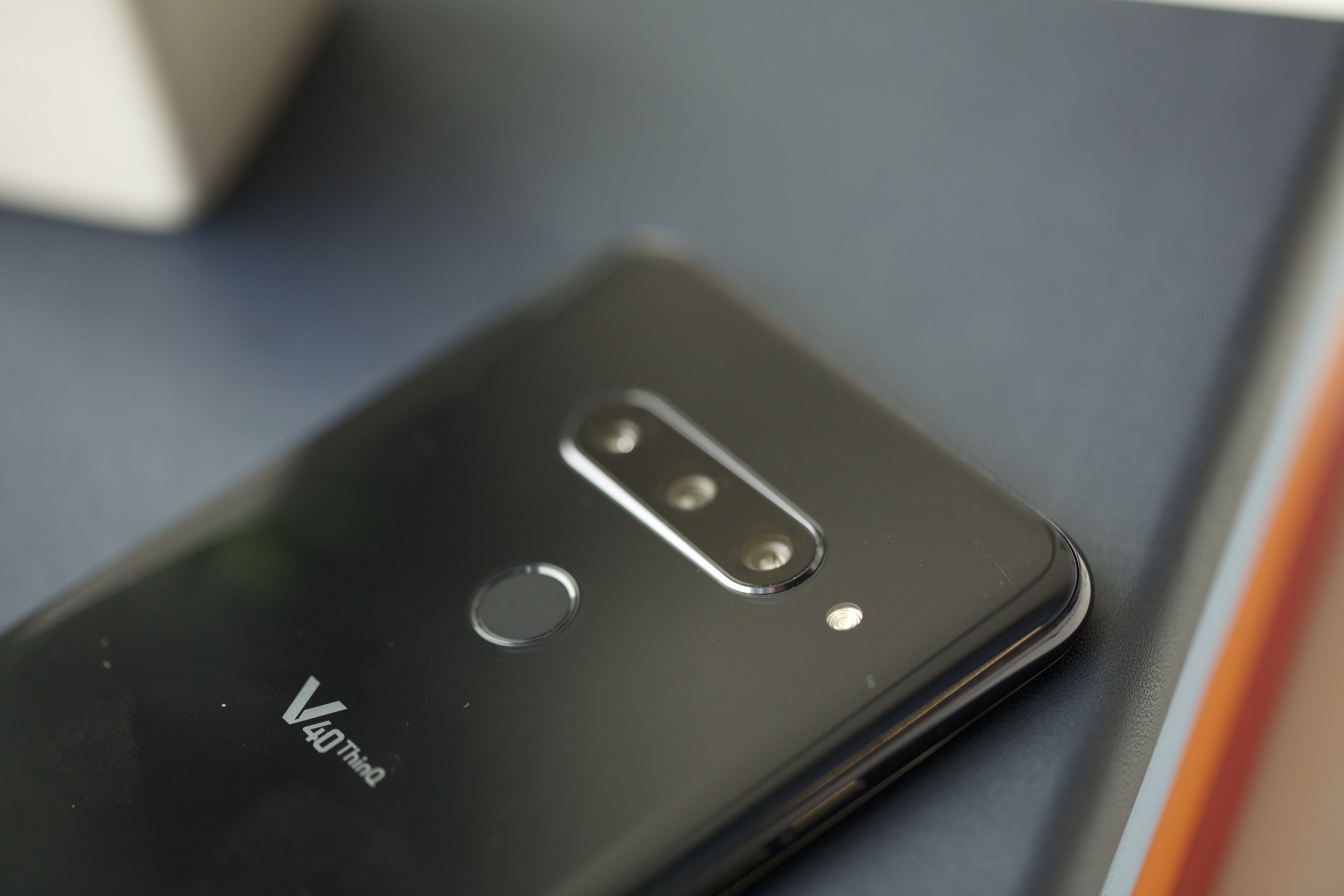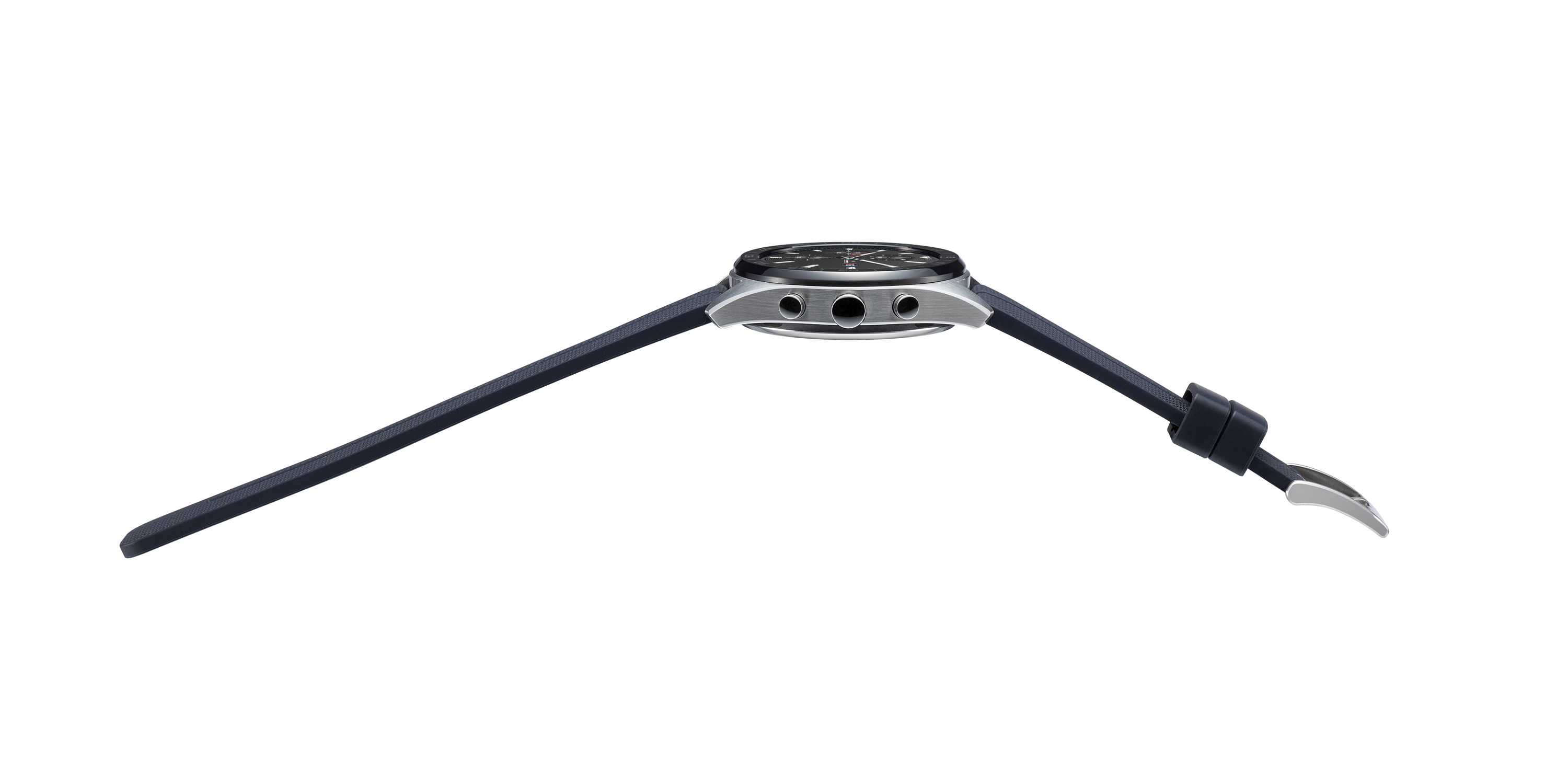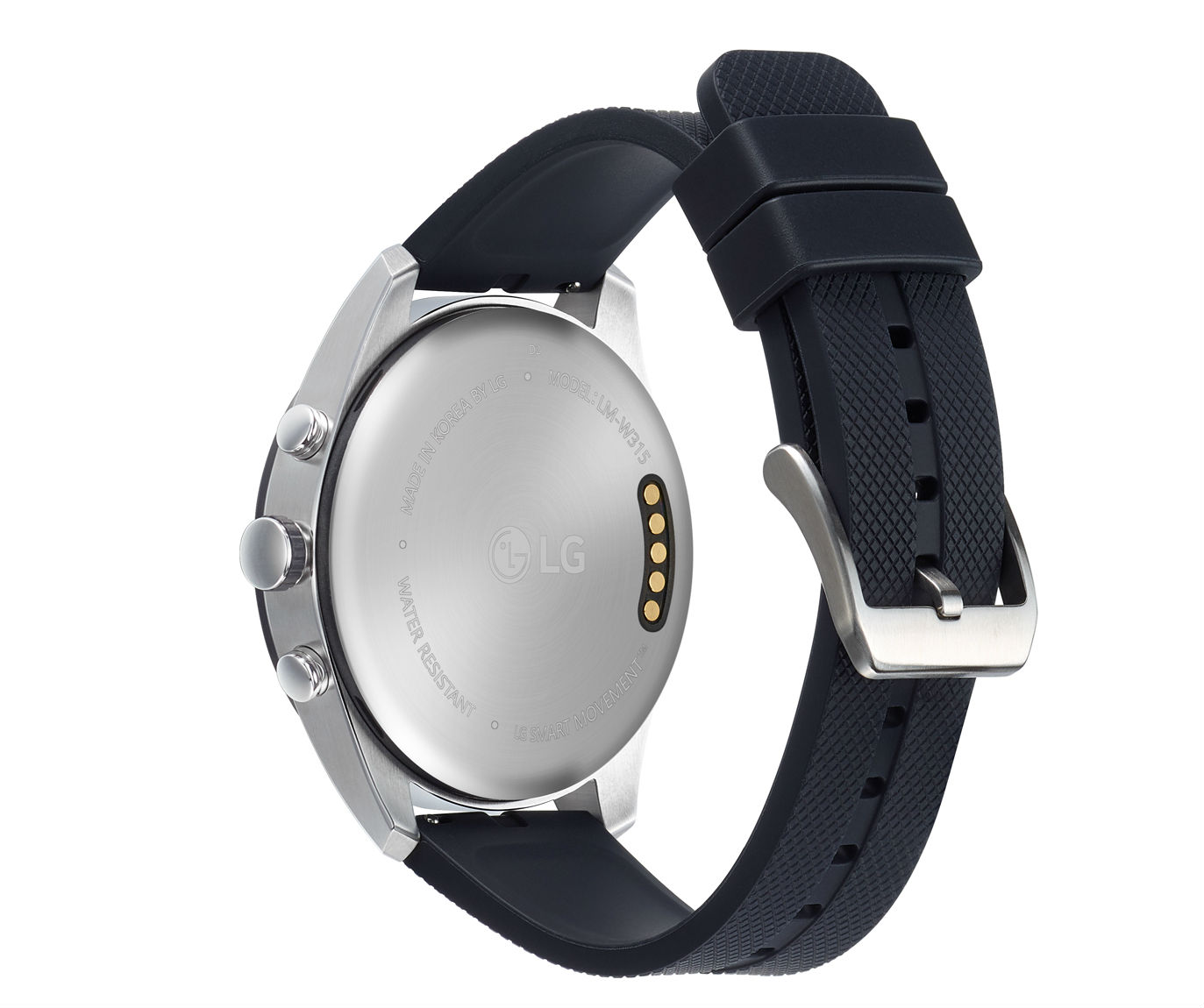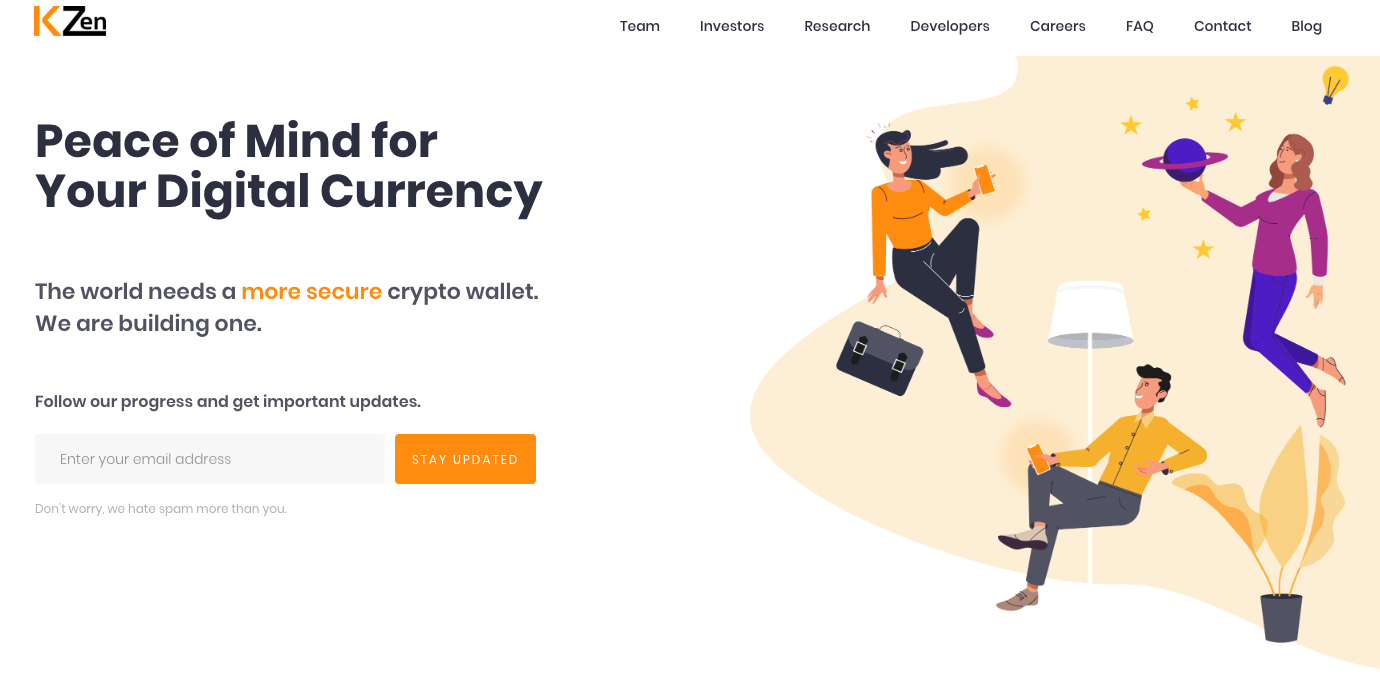Music
Trailers
DailyVideos
India
Pakistan
Afghanistan
Bangladesh
Srilanka
Nepal
Thailand
StockMarket
Business
Technology
Startup
Trending Videos
Coupons
Football
Search
Download App in Playstore
Download App
Best Collections
Technology
Thattwo on the front and three on the rear. LGalready teased the upcoming flagship quite a bit in the lead up to todayannouncement. Understandably so. Ithard for a company like this to stand out in a world full of Apples and Samsungs — even with all of those lenses.
The South Korean company has never been afraid to push the envelope, and many of its smartphone innovations have become commonplace in recent years. Of course, LGnot the first to bring a handset with three lenses to market — Huawei had the company beat by several months on that front with the P20.

Official images have been floating around for some time, but until now we haven&t actually seen them in action — or known precisely what each of the lenses does. Well, not officially, at least. The breakdown of the three horizontally oriented lenses is this: standard, super wide-angle and 2x optical zoom.
One click of a button and you can capture all three at once. Or you can just toggle between the three shots in preview mode. Thatreally the easiest way, but it doesn&t afford you the bizarre Triple Shot function, which offers up an animated transition between shots. I&m still trying to figure out the real-world use for that bit.

Itcertainly less useful/interesting than the Cine Shot bit we wrote about earlier this week. Thatsomething I could certainly see myself using again, if only to fulfill my longtime goal of capturing the essence of Anthony singing karaoke. One day technology will catch up. Or maybe we&re just flying too close to the sun here.
The two front-facing cameras are 8 and 5 megapixels, taking standard and wide-angle shots, respectively. The phone retains the AI picture-taking features LG rolled out for its handsets back at Mobile World Congress, which adjust automatically, based on the sort of scenes they&re shooting.
The V40got a 6.4-inch QuadHD display, 6GB of RAM, 64GB of storage (plus a microSD slot) and sports a Snapdragon 845. Oh, and yep, therea headphone jack.
- Details
- Category: Technology
Read more: The V40 ThinQ is LG’s new five-camera smartphone
Write comment (98 Comments)Along with the new V40 ThinQ, LG showed off this odd little addition. Ittrue that hybrid smartwatches are no longer a novelty in and of themselves at this point, but the Watch W7 takes a bizarre approach to the category.
In fact, when the company first discussed the product at a briefing this week, we had a lot of questions — and unlike the phone, there weren&t any units present, lending more mystery to the thing.
The breakdown is basically this: ita Wear OS smartwatch with mechanical hands. So, like, a standard smartwatch display, with two physical watch hands doing their thing on top of it. You still interact via touch, though that actually happens via the glass on top. The hands, meanwhile, move to accommodate the text on the screen — and the text moves accordingly.
Therea button on the side which, when pressed, move the hands out to 180 degrees. The text underneath then shifts up, so as to not be obscured by the physical parts. Also, the glass apparently lifts slightly when the hands realign. LG says the functionality was actually built into the latest version of Wear OS to accommodate LGFrankenstein watch.
Iteither a great idea or a terrible one. I&m honestly reserving judgement until we have a review unit in hand, though I will say I&m more excited to try this out than just about any mainstream wearable in recent memory. I mean, itnothing if not innovative.

During the briefing, LG said, &we&re trying to earn being on your wrist.& Thata pretty tall order for Wear OS these days. After all, Apple is utterly dominant in the category, and while both Fitbit and Samsung have made strides on the Android side of the equation, neither one actually runs Googlewearable operating system.

Therecertainly something to be said for mechanical hands — therethe significant savings to battery life you get from not having to turn the display on to check the time. Therealso the fact that it actually looks pretty decent as a standard watch. The era of sporting a smartwatch for the sheer novelty has drawn to a close.
The W7 runs a pricey $450. Pre-orders for this weird thing open this Sunday. It hits stores on the 14th.
- Details
- Category: Technology
Read more: Can LG’s strange hybrid smartwatch breathe life into Wear OS
Write comment (99 Comments)We&ve got some new faces around TechCrunch — some of them real fresh and some who you might know. Though you might have seen some of their bylines around the site, I thought it would be nice to officially welcome them.
First up is Kirsten Korosec, who leads our transportation and mobility reporting. Kirsten is an accomplished and seasoned journalist in the space and has been with us for a few months writing, hosting panels at Disrupt and scooping major news. You&ll want to stay tuned to her coverage of this wild area of coverage as she deciphers Elon tweets, filters startup coverage and figures out how much horsepower a scooter actually needs. You might have seen one of Kirstengreat pieces of original reporting on TC already, like Comma.ai getting a new CEO, GM offering Cruise employees equity in Cruise, Skedaddle talking acquisition with the big ridesharing companies and outing Anthony Levandowskinew stealthy self-driving startup called Kache.ai.
Kate Clark is one of our newest hires and is covering the startup and VC ecosystem in Silicon Valley alongside Danny Crichton, Connie Loizos, Megan Dickey and Lucas Matney. Kate comes to us from PitchBook and has hit the ground running with a host of great stories like raises and acquisitions both large and small, scooter drama, as well as clever posts on sex tech and VC pay.
Our new security reporter Zack Whittaker has been producing some great work in his time here, as well. Zack comes from a 10-year stint at ZDNet and brings with him a deep understanding of security and privacy issues that are affecting so many companies large and small. Herequired reading on the topic, and hebeen proving it with great scoops like this one on Texas voter records being exposed, this story about iPhone apps being caught quietly monetizing your location and a huge breach of credit card data by Newegg.
Next is a gent you might know: Eric Eldon. Eric, who previously served as the co-editor of TechCrunch until he cleverly managed to escape to go live the easy life of doing a startup (called Hoodline), is back to work on a special new project Danny Crichton is heading up that we&re not quite ready to announce yet. Eric, as many of you likely know, is a fantastic editor and has spent quality time in the ups and downs of startupland, a perspective that will help tremendously as we try to keep making TechCrunch the last word in startups and emerging tech, as well as a genuinely useful resource for every founder, engineer, executive and aspirant in tech.
We&ve also got some new columnists and writers on other specific topics joining the team.
Eric Peckham will be writing on media and tech, and has interest in ML and blockchain and how traditional media companies are adapting. You may be familiar with his Monetizing Media newsletter. Joyce Yangis a former equity analyst who now writes a newsletter on Asia blockchain, called Global Coin Research, and is already writing a great column for us today. Gregg Schoenberg, who is thefounder of Wescott Capital and co-founder of The Financial Revolutionistnewsletter, is doing an interview series with us with CEOs and founders in the fintech space. Conor Witt works at Citistrategy group and will be writing about fintech for us with a new column.Finally, Ziad Reslan, a lawyer who is interested in the harder questions of policy issues, as well as John Chen, a former venture investor at Emergence (where he sourced the investment for Crunchbase), have also been writing occasional columns.
New hires to come
We&ve also got some open positions at TechCrunch, so if you know a good candidate, or are one yourself, please apply. We&re looking for a solid senior writer with an insatiable curiosity and a critical eye to bolster our startup coverage in San Francisco, as well as a science writer with a focus on emerging biotech and health tech from a consumer and enterprise perspective with variable location. Here, there, Mars is OK. Since we now have events around the world, a desire for on-stage work is a plus. Feel free to use this link to apply for either or hit me up on Twitter @panzer.
In the engineering and product space, we&re in need of a Product Manager to oversee TC product, including our brilliant new site, events products, apps and more. We need an associate PM, as well, who has strong operational experience and a couple of additional engineerswith strong front-end experience but with a major preference to those who have some WordPress and PHP experience, because we work across the full stack to make stuff happen here. We need these folks to work on existing stuff as well as exciting new products. We&re a forward-looking site that is going to be pushing the boundaries of what publishing on the web and other locations looks like. If that sounds interesting to you, you know what to do.
With these people, and more to be announced, you may notice that we are making a commitment to covering the ground that we know you care about the most. We&re not going broad, we&re going deep, accurate and, as always, scrappy as hell. Itgoing to be fun; talk soon.
- Details
- Category: Technology
Read more: Welcome Kirsten Korosec, Kate Clark, Zack Whittaker and some guy named Eric
Write comment (99 Comments)A beloved regional burger chain in the Pacific Northwest is the latest fast food company to suffer a major data breach.
Burgerville, headquartered in Vancouver, Wash., disclosed today that any customers who used a credit or debit card from September 2017 to September 2018 at any of its locations may have had their card details stolen. The company operates 42 locations in the region.
In August, the FBI contacted Burgerville to notify the company that it had been targeted in a cyberattack. The company believed that intrusion to be &brief& until September 19, when an internal forensics team identified that the chain was still affected by malware running on its systems. Burgerville coordinated with the FBI to neutralize and contain the malware, working with an external cybersecurity firm.
&As soon as Burgerville learned the intrusion was still active, the company immediately began steps to completely eradicate this breach, necessitating that all Burgerville systems be taken offline and upgraded simultaneously without any warning to the criminals,& the company said in a press release.
TechCrunch contacted Burgerville and the FBI to ask how many customers might have been affected by the hack. The company declined to provide additional details at this time.
While the company has yet to disclose many technical details, it attributed the attack to Fin7, a &prolific& international cybercrime group. In August, the Department of Justice apprehended three members of Fin7 involved in &a highly sophisticated malware campaign targeting more than 100 U.S. companies, predominantly in the restaurant, gaming, and hospitality industries.& Believed to be a billion-dollar operation, Fin7 operates under the guise of a front company while selling stolen data in online marketplaces.
The attack on Burgerville was likely accomplished by malware that infected its point-of-sale systems — a common target in the recent surge of restaurant cyberattacks. In this case, the company confirms that attackers were able to exfiltrate names, credit card numbers, expiration dates and CVV numbers.
According to the Department of Justice report, Fin7 began many of its attacks with spear phishing campaigns that delivered attachments laced with an &adapted version& of the malware known as Carbanak. An FBI report provides more detail on the groupmethods.
As part of its August announcement, the Department of Justice noted that Fin7 was behind already disclosed hacks of Chipotle, Chiliand other food chains, including local businesses in Western Washington that remained unnamed at the time.
- Details
- Category: Technology
Read more: Northwest fast food chain hack exposed customer credit cards
Write comment (92 Comments)KZen, a company run by former TC editor Ouriel Ohayon, has raised $4 million in seed to build a &better wallet,& obviously the elusive Holy Grail in the crypto world.
Benson Oak Ventures, Samsung Next, Elron Ventures invested.
Ohayon, who has worked at Internet Lab and founded TechCrunch France and Appsfire, wanted to create an easy-to-use crypto wallet that wouldn&t confound users. The company name is a play on the Japanese word kaizen or improvement and it also points to the idea of the zero-knowledge proof.
Omer Shlomovits, Tal Be&ery, and Gary Benattar are deep crypto researchers and developers and helped build the wallet of Ohayondreams.
&We wanted something that did not feel like a pre-AOL experience, that was incredibly superior in terms of security, and simple to use,& he said. &We wanted a solution that brings peace of mind and that did not force the user into compromising between convenience and security which is, unfortunately, the current state of affairs. We quickly realized that this mission would not be possible to achieve with the same tools and ideas other companies tried to use so far.&
The app is launching this month and is being kept under wraps until then. Ohayon is well aware that the world doesn&t need another crypto wallet but heconvinced his solution is the best one.
&The market does not lack solutions,& he said. &On the contrary, there are software wallets, hardware wallets, paper wallets, vaults, hosted custody. But there is no great solution. To be able to use a crypto wallet you either need a good dose of Xanax or a masterdegree in computer science or both, unless you want to depend on a central entity, which is even worse as the news are reminding us weekly.&
We&ll see as they use the cash to launch a crypto wallet that anyone & not just Xanax-eaters & can use.
- Details
- Category: Technology
Read more: KZen raises $4 million to bring sanity to crypto wallets
Write comment (93 Comments)Helping friends meet up offline has been a massive missed opportunity for Facebook . Whether because the brand is too creepy or the politely opt-in 2015 rollout of its location sharing feature wasn&t creepy enough, Facebook Nearby Friends never quite took off. Only 103 of my 1,120 friends in San Francisco have it turned on.
Itnot the only one struggling with &The quest to cure loneliness.& Foursquare Swarm, Glympse, AppleFind My Friends and Google Maps& real-time coordinate-sharing option have all failed to become a ubiquitous standard.
The redesigned map homescreen of Facebook Nearby Friends
But last year, Snapchat launched a different take on the idea based on its biggest acquisition ever, French app Zenly. With Snap Map, it wasn&t just about the utility of seeing a list of friends& locations like on Facebook, but also splayed them out across maps that you could dive into to see their latest geo-tagged Stories. It was as much about fun and content as it was about actually hanging out with people in person.
Now Facebook is testing a significant redesign of Nearby Friends that looks a lot more like Snap Map. It replaces the list view of the neighborhoods and cities friends are in with a map that groups friends together by city. A &view list& button opens up the former homescreen, though in both views you still can only see a friendapproximate location in a neighborhood or city, not their exact coordinates. Facebook confirms to TechCrunch that &We&re testing a new design for Nearby Friends, a tool people have used for the past four years to meet with their friends in person. People have complete control over whether to use Nearby Friends or not. They can turn it on in the Nearby Friends bookmark.&
That statement both subtly promotes Facebookopt-in privacy setting for Nearby Friends while urging people to actually go back and activate it. The screenshot was generated from the code of FacebookAndroid app by mobile researcher and frequent TechCrunch tipster Jane Manchun Wong. Interestingly, after TechCrunchinquiry, Wong tells me Facebook appears to have deactivated server-side the ability to access the map feature.
The reason this matters is that Facebook is desperate for engagement, especially amongst younger users who are slipping away from it to Snapchat and Instagram. If revamped with this map and other improvements, Nearby Friends could become a more popular utility that keeps people opening Facebook. Getting more people to share their real-time location could open new opportunities for local ad targeting. And Facebook could benefit from showing it unlocks meaningful offline connections given its recent brand troubles following election interference and calls that itthe opposite of &time well spent.&
The existing design of Facebook Nearby Friends
Snap Map was smart, but itsadly buried behind an awkward pinch gesture from Snapchathomescreen, or inside the search bar where some users wouldn&t expect it. Internal Snapchat usage data scored by Taylor Lorenz for The Daily Beast revealed that Snap Map had sunk from a high of 35 million daily unique viewers after its June 2017 launch to just 19 million by that September — merely 11 percent of Snapchatusers at the time. Users never seemed to cease on it as a method of browsing Snapchatgeo-tagged content.
Unfortunately, none of these location apps have figured out that meeting up isn&t all about location. Itabout availability. It doesn&t matter if I see my best friend is at a coffee shop right away if they&re not actually available to hang out. They could be on date, having a business meeting or trying to get some work done. If I drop in just because I see they&re close by, it could be awkward. You&d have to first message them, but you can come off seeming desperate if they can&t or don&t want to meet up with you.
Location apps need an availability indicator similar to the green &online& dot used by many chat apps. You could toggle that on if you wanted to show you&re interested in some spontaneous friend time.
Facebookactually spent the last year trying to build this into Messenger in the form of &Your Emoji& status. It lets you pick an emoji like a martini, fork and knife or barbell thattemporarily overlaid on your profile pic thumbnail to let people know you&re down for drinking, getting dinner or working out. The feature is yet to be widely tested, indicating that Facebook hasn&t quite cracked the nut of encouraging online meetups.
Ideally, Facebook would combine Nearby Friends and Your Emoji to help users share both approximately where they are and whether they want to hang out. The next step would be making it easy to watch a friendgeo-tagged Facebook Story from wherever they are. And then, Facebook could further copy Snap Map by making public Stories and other location-based content accessible from the map so you could browse it for fun instead of the News Feed or Stories tray.
Still, making Nearby Friends work could require Facebook to rethink the privacy element. The friend graph has bloated to include family, co-workers, bosses and distant acquaintances with whom users might not want to share their real-time location. Finding a better way to let you share where you are with just your closest friends could make more people comfortable with the feature.
Facebook needs to rethink its entire product stack to embrace the high-definition cameras, big phone screens and fast network connections that make it easier to convey information through imagery than text.Visual communication is the future, and that goes far beyond Stories.
- Details
- Category: Technology
Read more: Facebook tests Snap Map-style redesign of Nearby Friends
Write comment (95 Comments)Page 4009 of 5614

 15
15





